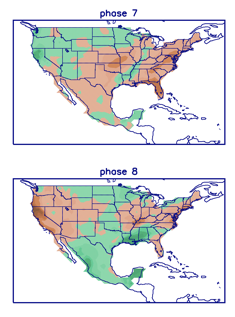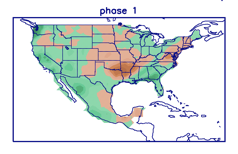Updated 12.08.23 @ 7:22a
As we hone in on the late December and early January pattern, there remains little if any change in the thought here that a more widespread cold pattern will evolve across the eastern 1/3 of the country. We note the Madden Julian Oscillation (MJO) is still showing that it wants to progress out of the traditionally warm December phases we’re in now into the colder phases post 12/20.




While we fully anticipate a more sustained colder than normal pattern to evolve in the 12/20 to 1/10 timeframe, I think this should be more of a situation that’s slightly colder than normal versus some sort of major arctic blast. All the same, as we get into the time of year when averages are close to their lowest, that will speak volumes given where we’ve been up to that point through the majority of December.
From a precipitation standpoint, these respective phases usually produce below normal precipitation across our neck of the woods, at least until we get into Phase 1 in January (interesting with the expected colder regime in place by that time period, heh?).


When we go look at the latest European ensemble precipitation anomalies over the next couple weeks (ending Dec. 22nd), the dry theme is alive and kicking. Frankly, it a very El Nino-like look (drier here while wetter across the Southeast and eastern seaboard) and shouldn’t come as a surprise.

Also of interest is the way the longer range weekly modeling shows the trough becoming more prevalent and sustained out in that post December 20th timeframe, continuing into early January.
European Weeklies: Winter wx fans also have to like all of the high latitude blocking on this run while the trough expands and sustains itself. Immediate take-away from yesterday’s run? Chilly and stormy close to the year and open to ’24.

JMA Weeklies: In similar fashion to the Euro, the model really expands and deepens the eastern trough Weeks 3-4. Again, it’s a chilly and stormy look.

In closing, we see no reason to deviate from our long standing idea of a pattern shift to chillier than normal around Christmas that should carry us into the first couple weeks of January. By that point, we’ll have to start monitoring other teleconnections (along with the MJO, of course), such as the NAO, to gain more clarity on the regime as we push into the 2nd half of meteorological winter.
